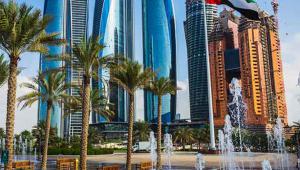By Osama Toema | 17 April 2012
As the dust starts to settle on a year of unparalleled political and social instability for the Middle East and North Africa, Osama Toema says policymakers need to develop the non-oil economy and create employment — and fast
Today the Middle East and North Africa (MENA) region stands at a crossroads. Over a year ago, popular uprisings that began in Tunisia quickly swept through Egypt, Libya, Syria and created rumblings of discontent in other parts of the region. Although it is all too easy to generalize, label and conceptualize these demonstrations and uprisings, there are common themes, issues and risks.
The post-revolution euphoria has quickly turned into pragmatic concerns about economic stability, and more specifically, about how the transition from autocratic to democratic systems and regimes can raise living standards and tackle burning challenges like corruption, inclusiveness and competitiveness, as well as the achievement of more rapid, inclusive sustainable growth. What is clear is that the transition will be difficult and its orderly management will be fundamental to achieving the aspirations of Arab citizens.
Promoting investment in physical and human capital, for example, and creating business friendly environments focused on the rule of law with appropriate institutional checks and balances are important first steps. Such actions will improve accountability and transparency, enhance competition and help attract badly needed private investment.
Although over the long term, the Arab Spring and the potential widening of democratic and economic freedom holds the promise of rising living standards and creating jobs for the growing, young labor force, in the short term it is already clear that greater political uncertainty will weigh heavily on growth prospects.
The global downturn and the crisis in the Eurozone have also depressed growth in the region. For oil exporters, the impact is limited, reflecting more government resources to increase spending and their closer links with faster-growing Asian economies rather than Europe. But oil-exporting countries are also being affected by the deterioration in international financial markets and the withdrawal of European banks from doing business in external markets.
Many countries in the region are attempting to offset weaker external growth through fiscal programs. Saudi Arabia has announced a multi-year spending package equivalent to 19% of total GDP. In 2011, the bulk of the extra spending was on increased employment and social
welfare, including wages and subsidies, but in future years, the focus will be on capital spending, directed mostly toward the housing sector. Spending programs, particularly on expanded subsidies and transfers, have been implemented in Egypt, as the country responds not only to the unrest, but the economic downturn and higher commodity prices. Monetary policy has also been supportive. Qatar, Saudi Arabia and the UAE have cut further or maintained their already low interest rates. In the near term, inflation pressures should remain under control, but high inflation and asset price bubbles in some countries could put pressure on growth.
But the greatest challenge in the MENA region is to develop the non-oil economy and create employment. Ernst & Young’s Rapid-Growth Markets (RGM) Forecast — a quarterly analysis that offers insight on macroeconomic trends across 25 RGMs from around the world — includes four from the region; Egypt, Qatar, Saudi Arabia and UAE.
With MENA possessing a relatively young and fast-growing labor force, we estimate that, in these four countries alone, over 15 million young people will enter the workforce over the next decade. The average annual growth rate in the labor force in MENA over the next 10 years is expected to be around 2% per year, whereas the labor force in the Eurozone and Japan is set to decline. While a growing labor force adds to potential growth in the region, creating jobs for this next generation in MENA will be one of the most important economic challenges.
Generally, our RGM countries in MENA perform well in terms of the ease of doing business, with all apart from Epypt in the top third of the World Bank’s Doing Business rankings in 2012. And most of them are significantly above the world average as rated in the Heritage Foundation’s Index of Economic Freedom, while Egypt is close to average. But while overall unemployment rates in general are low across the MENA RGM countries, this can mask some disparities within the workforce.
The Saudi population has grown at a rate of 2.5% pa over the last decade, with half the population below the age of 23. While the unemployment rate is officially put at 10% for Saudi nationals in 2010, the highest unemployment rates are among the young. Furthermore, labor participation rates are unusually low at 36% (in 2009), largely reflecting a female participation rate of just 12%.
Similar to other countries in the MENA region, the UAE labor market is segmented between national and foreign workers, with around 90% of nationals employed in the public sector. The average unemployment rate in the UAE was 3.9% in 2009, but unemployment among UAE nationals was 14% compared with 2.8% among expatriate workers, according to the IMF. Unemployment among UAE nationals is higher among the young and concentrated in the northern emirates. For example, the unemployment rate among UAE nationals aged 20 to 24 is estimated at 24% in 2009. Egypt has an even greater challenge, with the unemployment rate among the young close to 60%, according to the IMF.
In order to address these issues and create opportunities for the next generation, the following steps would pay dividends:
► Encourage employment in the private sector: while wages are relatively flexible, better wages and job security in the public sector can discourage nationals from seeking employment in the private sector.
► Promote entrepreneurship and create the right environment for new businesses as this can provide faster employment growth.
► Develop the non-oil economy: the oil sector is highly capital-intensive and provides fewer opportunities for employment growth. But many economies in the region have successfully taken advantage of opportunities in tourism, financial services and technology and there is potential for much more to be done.
► Invest in education and training: improving the skill set among nationals and ensuring less of a skills mismatch between nationals and non-nationals is a priority. In the UAE, foreign professionals have, on average, four more years of formal education than nationals. Saudi Arabia has increased spending on placement programs and training schemes.
► Target public spending on infrastructure: according to the IMF, evidence from Latin America and the Caribbean suggests that infrastructure investment can have a sizable impact on employment generation. About 40,000 annual direct and indirect new jobs can be created in the
short term for every US$1b spent on infrastructure projects. On this basis, 1% of GDP spent on the right kind of infrastructure projects could generate 87,000 new jobs in Egypt. Saudi Arabia has committed to a multi-year fiscal package equivalent to 19% of GDP, with a focus on infrastructure spending.
Political harmony and the future prosperity of the region hinges on achieving economic growth. The Arab Spring has raised expectations and aspirations. It is now time for each country in MENA to find its path to achieve the sociopolitical transformation that will provide the environment to meet and exceed its potential, and position this region and its citizens where they rightly belong.
Read the full Rapid-Growth Markets Forecast at http://emergingmarkets.ey.com/
Osama Toema is Ernst & Young’s Government & Public Sector Leader in the Middle East and North Africa
This article first appeared in the March 2012 edition of Citizen Today













